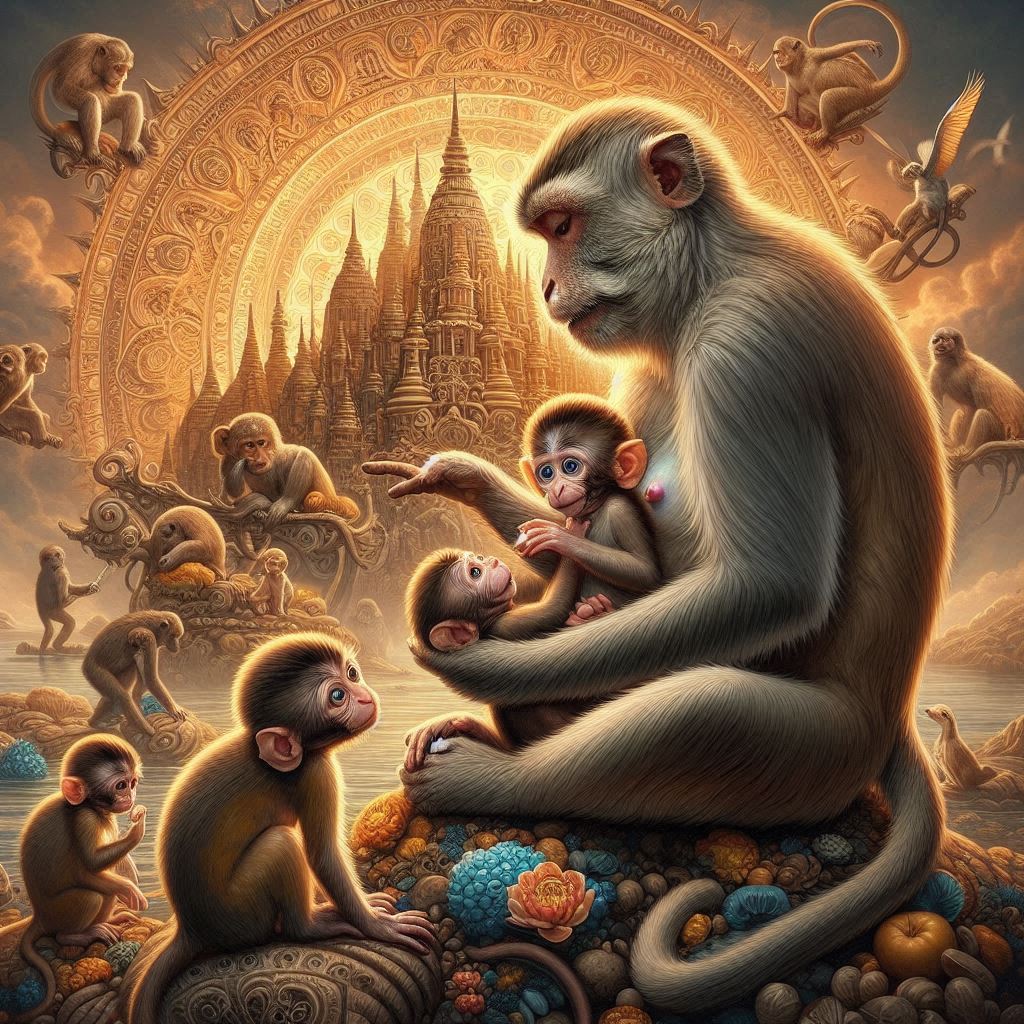
Monkey Parenting: How Different Species Raise Their Young
Share
Monkey Parenting: How Different Species Raise Their Young
Parenting is a critical part of the survival of any species, and for monkeys, the way they raise their young is as diverse as the species themselves. From carrying their babies through dense jungles to teaching them the ways of their social group, monkey parents invest a great deal of effort into ensuring their offspring thrive. In this blog post, we’ll explore how different monkey species raise their young, the fascinating parental strategies they use, and what we can learn from their parenting styles.
The Role of Monkey Parents
For most monkey species, parenting is a shared responsibility. Both mothers and fathers play important roles in raising their young, although the level of involvement from each parent can vary depending on the species. Parenting strategies can range from protective and nurturing to more independent and hands-off, based on the environment, social structure, and the evolutionary needs of each species.
Let’s look at how some popular monkey species raise their young, each with their own unique approach to parenting.
1. Capuchin Monkeys: Cooperative Caregiving
Capuchin monkeys, known for their intelligence and social behavior, have an interesting approach to parenting. In their tight-knit groups, both males and females help care for the young. While mothers are the primary caregivers, other adult females, and even older siblings, often step in to assist with babysitting and grooming the infants.
Capuchin babies are carried by their mothers for the first few months of life, but after this period, they become more independent and start exploring the world around them. The family group provides a strong support system, where everyone plays a role in ensuring the young ones are safe and well-cared for. Older siblings often help by carrying their younger siblings, a behavior that teaches them the skills needed to care for their own offspring one day.
2. Howler Monkeys: Protective Mothers
Howler monkeys, known for their distinctive howls, have a more maternal-focused parenting style. In these species, mothers are highly protective of their young and carry them for several months, often keeping them close at all times. Howler monkey infants are entirely dependent on their mothers during their early months, relying on them for nourishment, warmth, and security.
As they grow, young howlers gradually start to explore their surroundings and begin eating solid foods. Howler monkeys live in family groups, where the mother plays a pivotal role in the socialization of her young. The father’s role is less involved, but he still plays a part in protecting the family and maintaining group cohesion.
3. Baboons: Social Parenting
Baboons are another species known for their complex social structures, and their parenting strategies reflect this. In baboon troops, the care of the young is a group effort. While mothers provide the bulk of the care and nurturing, other females in the troop will often help look after the young, particularly if the mother is busy foraging or dealing with group matters.
Baboons live in large, often chaotic groups, and the young are exposed to a range of social interactions from a very young age. Mothers teach their offspring important life skills, such as foraging for food and navigating the social hierarchy. However, young baboons also learn through observation, watching how other members of the troop interact. As they grow older, they begin to play and engage with other young members of the group, building friendships and social bonds.
4. Rhesus Macaques: Hands-On Parenting
Rhesus macaques are a species where hands-on parenting is crucial for survival. Macaque mothers are incredibly attentive to their infants, staying close to them for the first few months. The babies cling to their mothers’ bellies or backs and rely on them for warmth, protection, and food. As they grow, the young macaques begin to explore their surroundings, but they always remain close to their mothers.
Male macaques tend to be less involved in parenting but do participate in protecting the group from predators. The mother-child bond remains strong throughout infancy, and the young macaque learns survival skills by observing its mother’s behavior. This species also has a strong social structure, and young macaques often interact with others in the troop, learning the ways of their group.
5. Gibbons: Monogamous Parenting
Gibbons are an example of primates with a monogamous social structure. In gibbon families, both the mother and father play active roles in raising their young. Unlike many other monkey species, gibbons tend to have only one offspring at a time, which leads to close, cooperative parenting between the pair.
Gibbon infants are highly dependent on their mothers for the first several months of life, but their fathers also share in the responsibility. The father gibbon will often carry the baby on his back and protect it while the mother forages for food. Once the baby reaches a certain age, it begins to accompany its parents in their daily activities, learning important skills like swinging through trees and finding food.
6. Spider Monkeys: Slow and Steady Parenting
Spider monkeys are known for their long limbs and acrobatic abilities. Like many other monkeys, spider monkeys live in social groups, but their parenting style is a little different. Mother spider monkeys are very dedicated to their young, carrying them for long periods and providing care and protection. The infants cling to their mothers, and as they grow older, they begin to explore the forest canopy.
Spider monkeys are known for their slow and steady approach to parenting. The young don’t reach full independence until they are older, and even then, they remain dependent on their mothers for guidance. The mother teaches her young about foraging and survival in the dense jungle, and their close bond is critical for the young monkey’s development.
The Importance of Social Learning in Monkey Parenting
One of the key aspects of monkey parenting is the importance of social learning. Many species of monkeys don’t just learn survival skills from their mothers—they also observe the behaviors of other group members. This social learning is vital for developing the necessary skills to thrive in their environments.
For instance, young monkeys watch older monkeys interact with their peers, find food, and navigate social hierarchies. By observing these behaviors, the young monkeys learn how to engage with the world around them and understand the importance of forming relationships with other members of the group.
Conclusion: The Diverse Styles of Monkey Parenting
Monkey parenting is as diverse and varied as the species themselves. From the protective and hands-on approach of howler monkeys to the cooperative caregiving of capuchins and the social learning strategies of baboons, monkey parenting styles reflect the unique needs of each species. While some monkeys are more solitary in their approach, others rely on the group to help raise their young and ensure their survival.
Understanding how monkeys raise their young not only provides insight into their behavior but also highlights the importance of social bonds, cooperation, and communication in the animal kingdom. Whether it’s the father carrying the baby on his back or the whole troop working together to care for the young, monkey parenting is a fascinating aspect of their lives.
Want to learn more about animal behaviors and fun facts? Check out:
